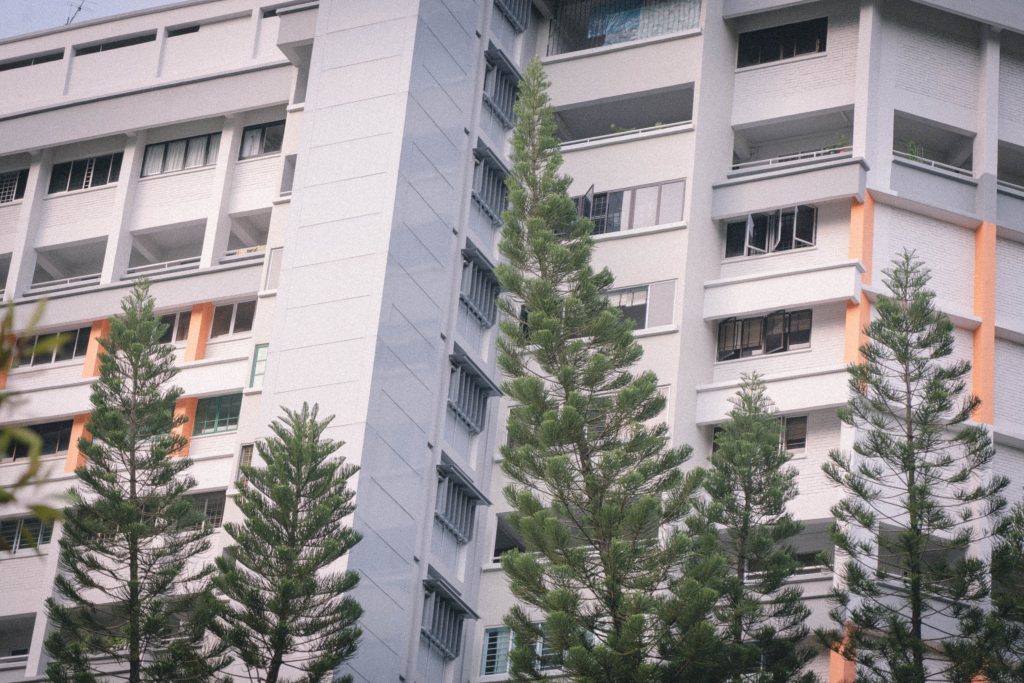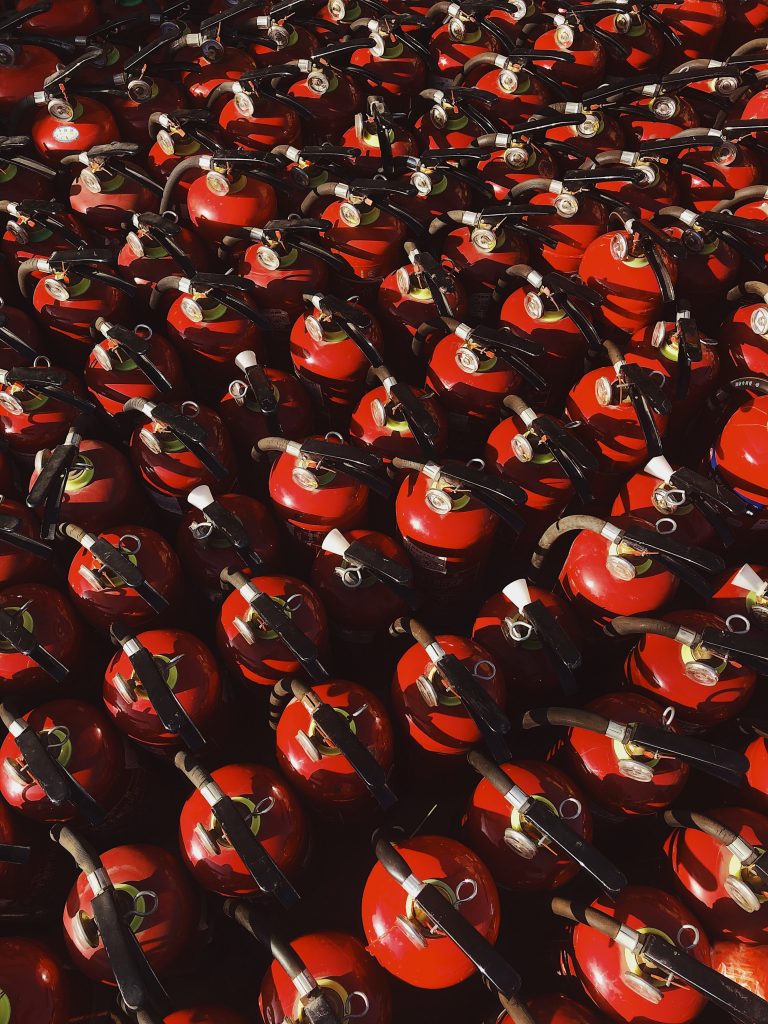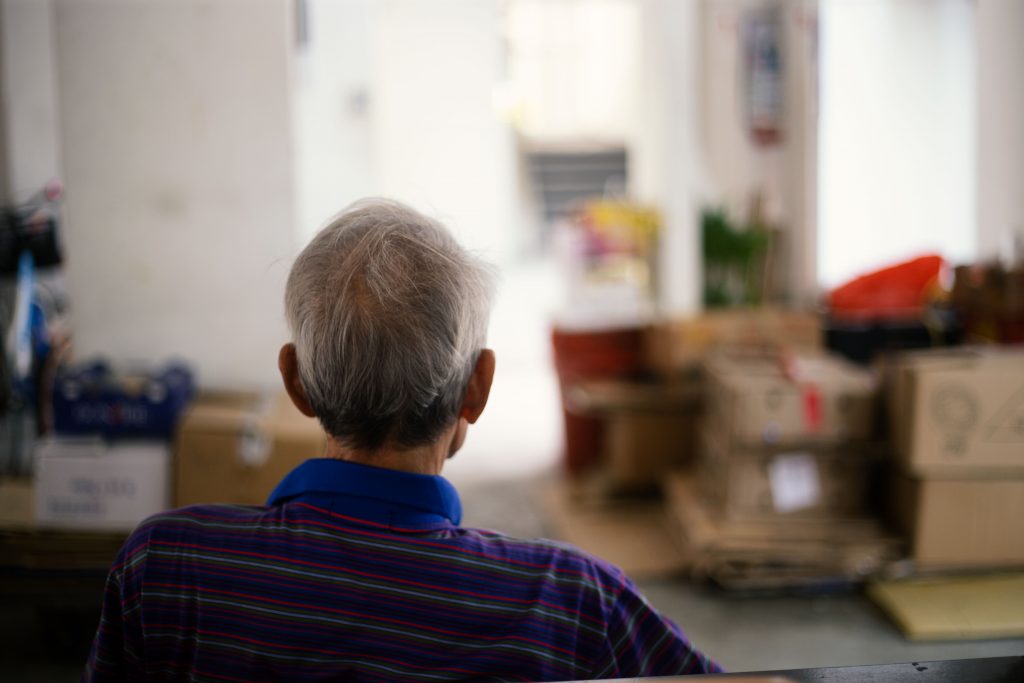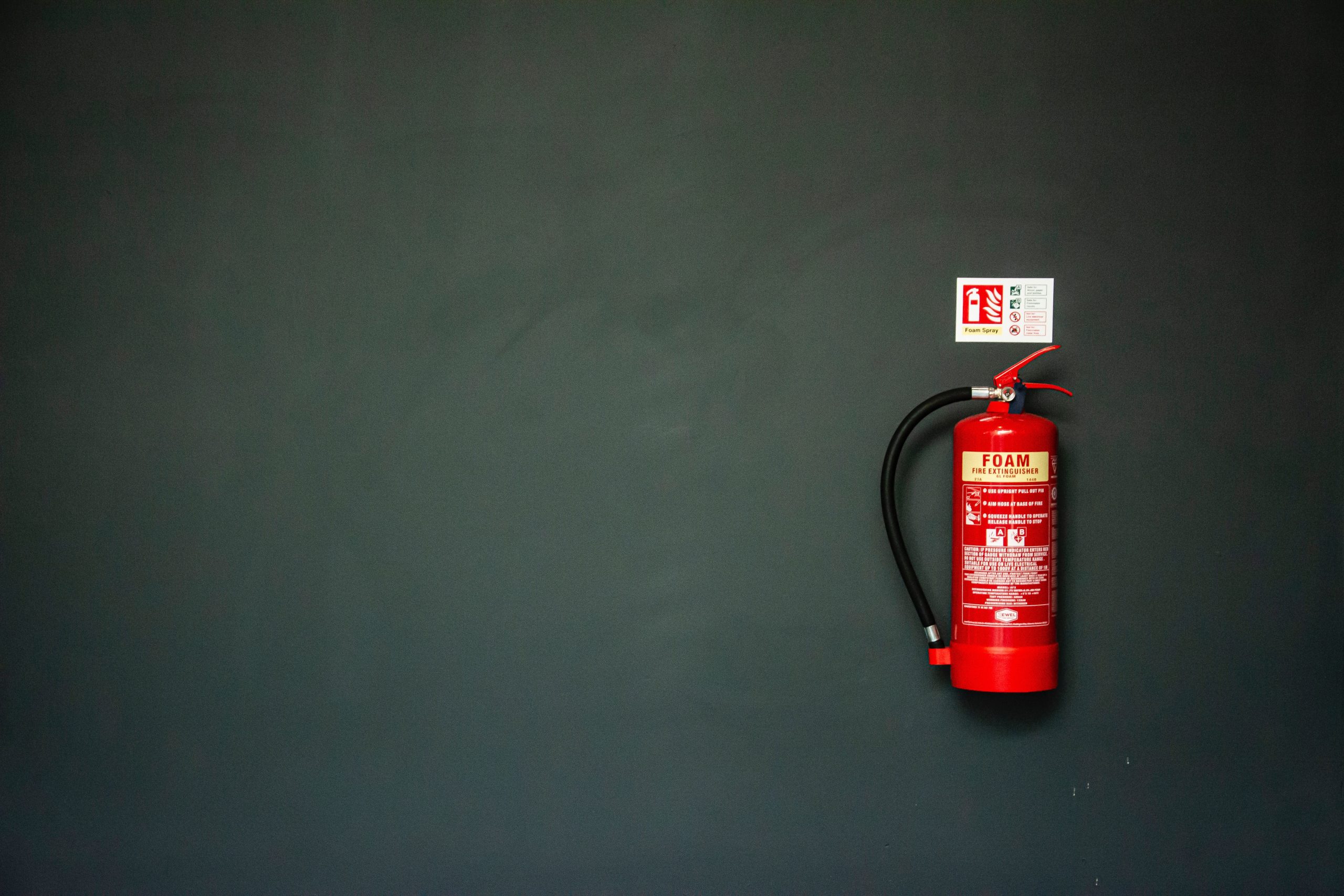Top image: Tak-Kei Wong/Unsplash
Fires are something we don’t think about much in Singapore. However, a sudden uptick in HDB fires in May this year should give us pause. One of the cases in Bedok North went beyond mere anecdote, claiming the lives of three, including a three-year-old.
The Singapore Civil Defence Force (SCDF) reported that despite the number of deaths by fire reported in the first four months of 2022, they saw a 6.9 per cent decrease in the total number of fires (from 364 to 369) between January to April as compared to last year.
ADVERTISEMENT
Prima facie, these numbers could lull us into a false sense of security that while the recent spate of fires was deadly, they might present as an anomaly or an exception. Still, when it comes to fires, like aeroplane crashes, their severity cannot be measured by frequency alone.
And while fires don’t discriminate, when it happens, their effects are more severely felt by residents on the lower end of income strata. The risk of fires increases severalfold for residents who live in smaller, shoe box rental flats where the units are much closer together and denser—a small fire spreads faster in close proximity.
Bigger families that stay in these smaller units are also at higher risk. More electrical appliances and everyday living paraphernalia than a living space can accommodate makes for an easy source of the fire. It is blatantly unfair for these families to be at the receiving end of a potential tragedy spurred by the typical, normative demands of day-to-day living.
Fires are not an anomaly
As someone who considers themselves very safety conscious, Nur Ilham Bin Ismail, 39, of @singledadcrib who lives in a 3-room resale flat, cannot underline the importance of fire safety at home enough. “People do get complacent sometimes,” says Ilham. “It’s not enough to just ensure when you leave the house, to turn everything off or things like that. These kinds of things, it’s impossible for you to remember to do every single time.”
“When you’re in a rush or things like that, then you might even leave your stove on, or you might leave certain electric appliances on or things like that”, says Ilham.
As a newly minted owner of a 4-room BTO flat, Norzulaiha Bte Sapari, 31, is also on tenterhooks given the frequency of household fires, but for slightly different reasons.
“I have asthma,” explains Zulaiha, “so fires make me a little anxious because of the smoke. It might trigger an asthma attack. Another thing is, sometimes with these fires, we don’t know it’s happening until we see the smoke.”
“In the future, when I have children at home, that also adds to my anxiety. Kids and the elderly sometimes don’t know what to do in a fire. And I’m scared it would be too late to evacuate them quickly, especially the elderly,” adds Zulaiha.

Making a case for fire extinguishers in every home
One of the most obvious answers to fire prevention is to have fire extinguishers at home. Fires often start small but, when equipped with proper tools, could easily be stopped dead in their tracks.
This is seconded by Zahir Latif, 38, who lives in a 3-room BTO-resale flat. Unlike most homeowners who don’t think twice about fires, he insisted on a fire extinguisher when he moved in a year ago.
ADVERTISEMENT
“I think because a lot of us are working from home, it should be more apparent that fires can happen at any time. It’s even more dangerous that many of us are still at home most of the time, and it can happen when we’re not looking,” says Zahir.
“When a fire happens, I think time is of the essence. There’s no time to think about what you need to do whenever a fire happens. It’s best just to have a fire extinguisher,” he stresses.
Fire extinguishers have an antiquated image that they are heavy and troublesome, especially with maintenance. That was what Zulaiha used to think, but after the ongoing fire outbreaks, her perspective has firmly shifted.
“Since I got my house, I think having a fire extinguisher is essential. Before I got my flat, I thought owning a fire extinguisher was inconvenient. Because you have to check the expiry date and all that,” she remarks. “Now, it’s better to have one. It definitely makes me feel more secure.”
Zahir adds that what many people imagine when they think of a fire extinguisher is the old-school fire type where you have to pull the pin and direct the hose. “It’s not like that anymore; you can get it in an aerosol can now,” says Zahir.
A cursory glance on Shopee reveals a selection of easy-to-use aerosol spray fire extinguishers that can combat an entire host of fires. More than their availability, these fire extinguishers are affordable (S$8.85 for this one) and designed to be relatively straightforward to use.
Even so, for some families, S$8.85 is no spare change, which is why there is a case to be made for a nationwide, government-led fire extinguisher distribution exercise akin to the recent distribution of masks and ART Kits in the past two years.
Make fire safety a national concern
With 1.09 million HDB households on record in 2021, providing one canister to each home will set the government back roughly S$9 million, chump change when compared to the CDC vouchers, which cost the government S$130 million.
“I think a push is needed from government agencies, and by push, I don’t mean having fire safety campaigns or things like that. Rather, it should be making sure that fire safety equipment, like fire extinguishers, are made more affordable,” suggests Ilham.
The benefits of such a radical government initiative are manifold. For one, the free distribution of fire extinguishers takes the burden off lower-income families who can’t spend whatever precious little they have on a fire extinguisher, especially when they can be better spent on necessary daily expenses.

“Maybe even for new homes, like BTO flats, a fire extinguisher can be something given for free to homeowners,” says Ilham, “I think that would remind them about fire safety. So, if the fire extinguisher expires, they would see the need to buy a new one.”
In the event of a fire, a readily available fire extinguisher could quell the flames until the authorities arrive, minimising damage and preserving as much of the unit as possible. The presence of a bright red fire extinguisher also serves as a daily, almost nagging reminder to family members to practise better fire-safety sense.
As much as HDB units are built according to SCDF’s fire safety code, where “HDB flats are designed as fire compartments, with concrete walls and floors that help prevent the spread of fire beyond or into the unit,” the damage enacted by the fire to a unit is cataclysmic, to say the least.
Even as the fires are contained to a unit, surrounding units are not spared the smoke and water damage that can take months and a hefty fee to get rid of.
Such an assertive and prominent fire safety initiative ensures fire safety is at the forefront of everyone’s minds. This, in turn, could translate to practising better fire safety habits that would minimise the number of household fires altogether.
Indeed, fires do not discriminate in their destruction, but their painful wake distinguishes those who can afford to pick up the pieces and those who can’t. Nevertheless, given the fire extinguisher’s efficacy at subduing fires, they should be as ubiquitous as any other household appliance.
The fact that it isn’t, makes us question why they aren’t more intentionally considered.
Fire alarms in HDBs
Putting a costly endeavour like a fire extinguisher distribution exercise aside, perhaps the easiest, most practical solution to fire safety would be to install fire alarms at HDB blocks.
A loud, raucous ringing is sure to rouse anyone into action and might even stop the fire from doing more irreversible damage. However, as simple as installing fire alarms in every HDB block, the reality is a little more complicated.
To the government’s credit, a significant move to increase fire safety was to ensure the mandatory installation of a Home Fire Alarm Device (HFAD) for all new residential estates built from June of 2018; this includes both public and private estates.
According to the SCDF’s website, an HFAD is an automatic smoke or heat detector which provides early warning of a fire by sounding an alarm to alert the occupants. Their website states, “a smoke detector is more effective in providing early warning of fire than a heat detector.”
The cost for maintaining an HFAD is also relatively affordable; they cost about S$80, replacement batteries cost about S$40, and the device can last up to 10 years. The device is clearly helpful and, in some instances, extremely crucial.
Besides protection, safety devices also promise peace of mind, which to many is priceless. In Zulaiha’s new BTO unit, her flat falls under this scheme and comes with a smoke detector in place, which puts her greatly at ease.
“I’m currently staying at my mom’s space which is a very old flat that is quite cluttered, and there are no smoke detectors. It can be quite scary, especially with the news,” says Zulaiha. “With the smoke detector in my new flat, it’s good. If there’s anything, the alarm will sound, and SCDF will be alerted.”
Another encouraging move is the “HFAD assistance scheme for HDB public rental flats” rolled out by SCDF to help install these devices. This plan started in 2018 and was expected to be completed in 2021.
It is important to note that the installation of HFADs is not mandatory by the SCDF, even though it is “highly encouraged”.
In a written reply by the Ministry of National Development to Mr Saktiandi Supaat in 2018, they mention “manual fire alarm systems are not required for standalone residential blocks, be it HDB or private,” and given fire-safe material used for the unit; there is “generally no need for an entire block to evacuate in the event of a fire”.
While we want to give autonomy to residents to make choices about their homes, fire safety devices should not be optional. Fire alarms and smoke detectors have been proven to save lives in the nick of time and serve as the first line of defence regarding fires.
As noted by Associate Professor and ex-Nominated Member of Parliament Walter Theseira, many Singaporeans live in older public housing estates and do not have these devices installed. As with the elderly, there is a tendency to hoard items such as newspapers that are highly combustible that block entrances, resulting in a fire hazard.
He also notes just how easy and financially sound it is for the government to portion off their budget for installing this device in every home. With our increasingly ageing population living in public housing estates, more must be done to prevent fires and minimise their damage.
Education about fires is severely lacking
One of the issues that stood out when looking at the reports for the fires was how some of the entrances were blocked by clutter or hoarding.
In normal circumstances, these instances are at most a messy house—however, it becomes extremely hazardous and life-threatening in situations like the fires reported in May.
These sights are all too familiar for Zulaiha, who works as a social worker and is in close contact with the elderly.

“I do a lot of home visits in the elderly sector. The cluttering in the house really worries me,” Zulaiha shares. “Every time I go for a home visit, I would usually try to work with the clients and let them know about fire safety and the fire hazards,” she continues. “Before I leave, I try to shift or help them tidy their belongings, so there’s a walkway for them to safely exit the house.”
Unsurprisingly, Zulaiha shares, these homes are also not equipped with a fire extinguisher.
Incidents of fires typically feel very far removed from us. When tragedy strikes, only then are we galvanised to practise fire safety habits and obtain fire safety equipment. This behaviour betrays our dearth of fire safety knowledge and how a bolder approach needs to be taken to education such that these tragic incidents are prevented.
Additionally, more checks by government officials must be enforced, or more block-wide fire safety drills should be held. While there are outreach efforts by different government agencies to impart their expertise regarding fire safety, it often falls on deaf ears, or the uptake of fire safety protocols is slow.
And as Singapore becomes increasingly globalised, the ease of online shopping means instant access to much more affordable gadgets and home appliances. We are beguiled by the extremely affordable prices of massive online shopping platforms like Taobao.
And here’s where our affinity to value might exacerbate instances of fire. In our bid for cheaper but just as snazzy electrical devices, we can be careless in checking for safety marks and whether they are compatible with our electrical grid.
According to the Consumer Product Safety Office, “the SAFETY Mark indicates that the product’s design has been tested and certified to be compliant with the relevant safety standards. For most appliance categories, the presence of the SAFETY Mark also indicates that internal safeguards have been incorporated to protect against fire and electrical hazards.”
Not doing our due diligence regarding lighting fixtures, appliances, and mobile gadgets have their price—just not the kind you can pay for.
This recent succession of fires has demonstrated its might and sheer ferocity. They can ravage homes and take lives in a matter of minutes, all while causing indelible harm to property and the surroundings. With the immense privilege of hindsight, there is certainly more that could have been done to quell the flames that took these lives too soon.
Since buying her house, Zulaiha now thinks that having a fire extinguisher is essential. “Before I got my flat, I thought owning a fire extinguisher was inconvenient. Because you have to check the expiry date and all that,” she remarks. “Now, it’s better to have one. It definitely makes me feel more secure.”



